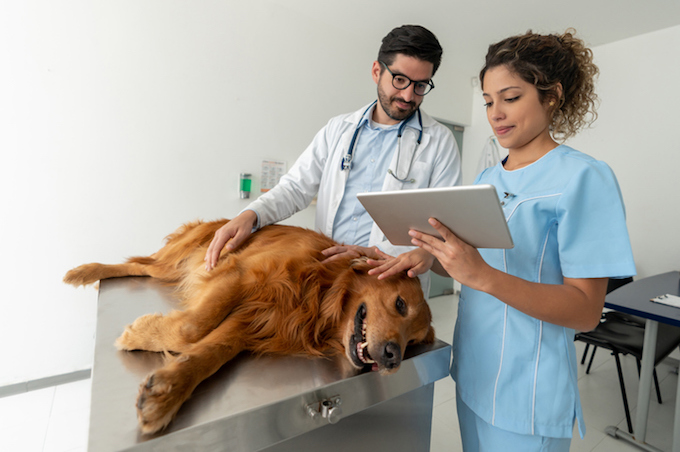Kidney filtration problems in dogs is often caused by infection or inflammation. The condition can cause hypertension, swelling, and abdominal issues.
The condition becomes progressively worse if left untreated. Unfortunately, the condition is also quite common in dogs.
Technically, the condition is also known as nephrotic syndrome. Additionally, you might hear it called glomerulonephritis.
If you see the signs of the condition in your dog, then get to a veterinarian for a proper diagnosis and treatment.
Here’s what you should know about the symptoms, causes, and treatments for the condition.
Symptoms of Kidney Filtration Problems in Dogs
The condition produces a range of symptoms. For example, some of the most common symptoms include:
- Breathing problems
- Pee with blood in it
- Appetite loss
- Fluid in the stomach
- Retinal detachment
- Drinking more water than usual
- Peeing more than normal
- Swollen limbs
- Lethargy
Causes of Kidney Filtration Problems in Dogs

The cause of the condition can be a number of things. For instance, some of the common causes include:
- Infections
- Cancer
- Heat stroke
- Heartworm
- Lupus
- Dehydration
- Toxins (ingested)
- Periodontal disease
Additionally, dogs with inflammatory conditions seem to be most predisposed to developing the condition.
Treatments for Kidney Filtration Problems in Dogs
Firstly, your vet will ask about your dog’s symptoms. Secondly, your vet will ask about your dog’s full medical history. This will include breed-specific problems.
Thirdly, a full physical examination will be carried out. Blood, electrolyte, and urine tests will also be taken. The subsequent results of the tests can help diagnose the condition. Additionally, ultrasounds and X-rays can help examine your dog’s kidneys.
Generally, treatment depends on the severity of the condition. In some cases, hospitalization will be needed. This is to stabilize your dog’s blood pressure and the amount of protein in their pee. Medication can help with this.
Generally, dogs dealing with the condition should follow a low protein and low sodium diet. Your vet can help formulate a safe diet for your dog’s needs.
Have you ever cared for a dog who suffered from this condition? How did your vet help your dog recover? Let us know in the comments section below.









